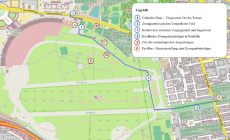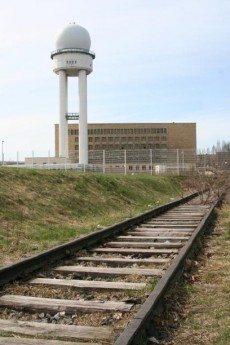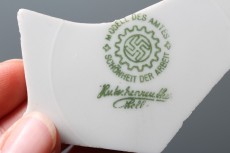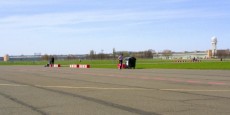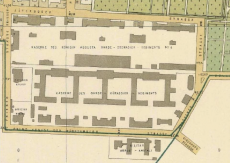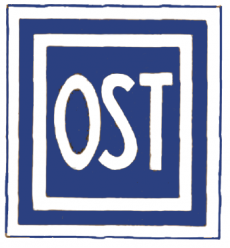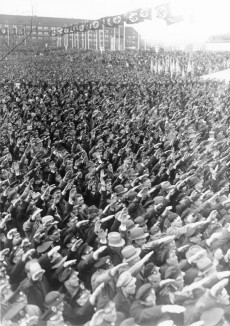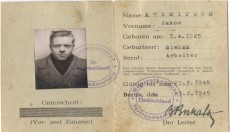Walking Tour of Tempelhof Field: 2. On the Go: Police barracks on Friesenstrasse and the Railroad Tunnel
Deutsch
Cross over to the opposite side of the street, directly across from the steel sculpture and away from the Tempelhof Airport building, and you will arrive at the north entrance of Tempelhof Field. Before you enter, take a moment to look behind you and notice the red brick building. It once belonged to the military barracks on Friesenstrasse, where Police Unit 5 of the Berlin Police Department is currently stationed.
In 1933 Hermann Göring (President of the Reichstag and one of the highest ranking Nazi officials) posted a police unit in the brick building. Not long after the Nazis took power, the unit (under the direction of Police Lieutenant Walter Wecke) began terrorizing and killing political dissidents.
Beginning in March of 1933, the police unit carried on with raids and mass arrests. Members of the labor movement were affected most by police action. Soon, the police barracks became known as a place of torture for various “dissident” groups such as union members, communists, socialists and all other groups and individuals who opposed the Nazi regime. Thousands of political protesters were transported from the barracks to be interrogated at the Gestapo headquarters on Prinz-Albrecht-Strasse or nearby to other barracks in the area. Many of the prisoners were deported to Columbia House across the street, where they were indefinitely detained.
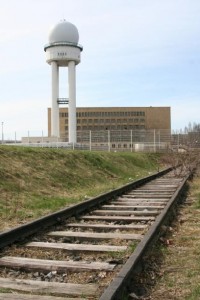
Rails coming to a sudden end
As you enter Tempelhof Field, continue to walk a few meters and you will eventually see train tracks to your right. The tracks are connected through a tunnel to the underground facilities at Tempelhof Airport.
During World War II the airport underground was used for munitions production. Forced laborers assembled fighter planes (Jagdflugzeuge) and dive bombers (Sturzkampfflugzeuge) in a series of underground tunnels, including the railroad tunnel. Once completed, the planes could either be sent directly to the runway or loaded onto a train to be transported to another airport and/or destination.
On the other side of the path, opposite of the train tracks, you will find a commemorative plaque dedicated to the forced laborers of Tempelhof Field; this is also the second station of the tour. It was here, during WWII, that the forced laborers’ living quarters were located.
Teresa Veerman
